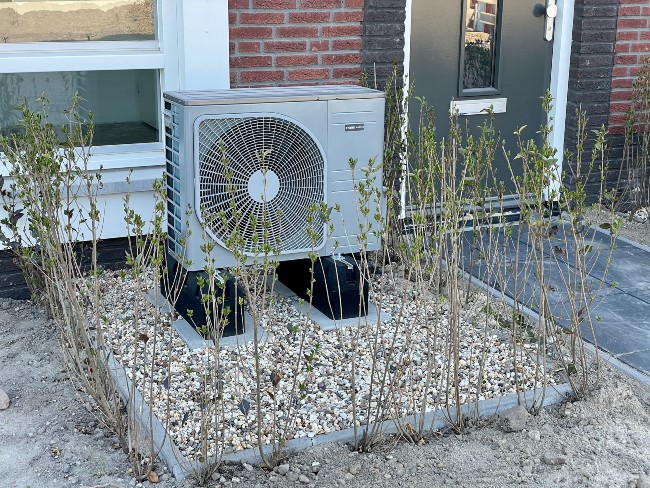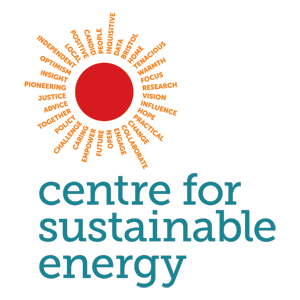Encouraging take up of low carbon heating solutions requires better information provision, new value creation and financing models.

As part of the UK Government’s net-zero strategy, by 2025, all gas boiler installations are due to be phased out for new build properties, and phased out completely by 2035.
About the research
Replacement heating systems will be required, such as heat pumps, which use electricity to extract warmth from outside sources before transferring it indoors. While more environmentally sustainable, heat pumps are a relatively new technology and can cost more than standard boilers. This raises questions around the trust, affordability and viability of the proposed nationwide transition, especially for people from different socio-economic backgrounds.
In order to understand the motivations and challenges facing homeowners, we canvased opinion among residents of Westbury-on-Trym, Bristol, who had expressed an interest in heat pump installation and who would technically be able to pay for the work.
This policy briefing proposes key recommendations that authorities and providers could effectively implement to facilitate greater take up of heat pump installations.
Working with the Centre for Sustainable Energy (CSE), Bristol City Council (BCC), Bristol Energy Network (BEN) and Sustainable Westbury-on-Trym community group, we carried out an anonymous survey of 100 households and an in-depth qualitative study with 27 participants who were willing to engage in a workshop and focus group discussions. The focus groups were formed based on the number of energy efficiency measures that each household had already undertaken on their properties, which indicated the varied level of readiness for heat pump installations.
The locality for this study was chosen due to the high levels of environmental consciousness of the residents, which suggested that householders would likely be early adopters of the technology in question.
Policy implications
Based on our findings, we make the following recommendations:
- Information provision: videos, user testimonials and technical information should be made available to clarify the costs, benefits and processes involved.
- Financing retrofit: information of UK government grants should be easily available.
- Value creation: it should be made clear to householders the value added to a house through energy efficiency measures.
- New financing and repayment models could be created, to give householders the ability to recoup part of their investment when reselling, or through a stamp duty mark up/down.
- Building trust: a register of qualified tradespeople/companies should be provided by local authorities alongside monitoring or standardising prices for improvements.
- Local authorities should help to upskill tradespeople and certified retrofit coordinators, to avoid a skills shortage and guide homeowners.
- Reducing disruptions: city planners and energy transition departments should work together to streamline consent and regulation processes.
- Householders should be able to start with heat pump installation and make improvements over time, rather than the current process where a home must be fully insulated before sizing for heat pumps.
- Stable local energy policies: Local authorities should set their own energy transition plans to encourage and support homeowners to commit to new technology.
Key drivers and obstacles for heat pump adoption
People were driven to make the transition to heat pumps for a few primary reasons:
- Sustainability: to minimise their greenhouse gas emissions.
- Money: to save on energy bills, especially given recent increases in electricity price.
- Necessity: to comply with government regulations, and where possible, to find solutions that freed them up from dependence on energy suppliers.
- Visibility: to replicate good practice whether observed in the locality or elsewhere, such as Sweden; the more people could see new technology in use, the greater their confidence in the alternatives.
- Future proofing: to safeguard their energy supply against international market fluctuations (as impacted by the Russian oil and gas supply).
- Domestic need: as part of regular home maintenance.
A number of obstacles emerged in parallel:
- The most prevalent barrier was uncertainty and lack of knowledge around how the technology works, the costs versus the efficiency gains, the amount of work involved to improve a property, and concerns regarding the lack of objective measures for success.
- People raised concerns around the financial and environmental losses involved in replacing heating systems that they had already invested in, such as the cost and the wasted carbon in an existing boiler.
- Additional costs appeared to pile up, including home thermal surveys, the cost of insulation, replacing pipes, new hot water tanks, new radiators and new heat supplies.
- People worried that they would miss out on other opportunities that might turn out to be more financially viable.
- There was uncertainty regarding whether the technology is sufficiently advanced to prove advantageous, dissatisfaction with its lack of modularity or “plug and play” options, and general lack of understanding around how it works.
- People expressed a lack of trust in tradespeople, citing previous bad experiences and a negative industry image.
- The complexity of local government processes was a deterrent, with people expressing doubt in the reliability of policies that are constantly changing.
- The potential for disruption and inconvenience was discouraging, as was the perceived impact of the new installation on the appearance of people’s homes.
Authors
Ruzanna Chitchyan, University of Bristol
Further information
Research paper: ‘Heat Pumps for Westbury-on-Trym: Focus Group for Able to Pay Householders’, by Dr Ruzanna Chitchyan
Policy Briefing 126: March 2023
Encouraging take up of low carbon heating solutions requires better information (PDF, 810kB)
Contact the researchers
Ruzanna Chitchyan


